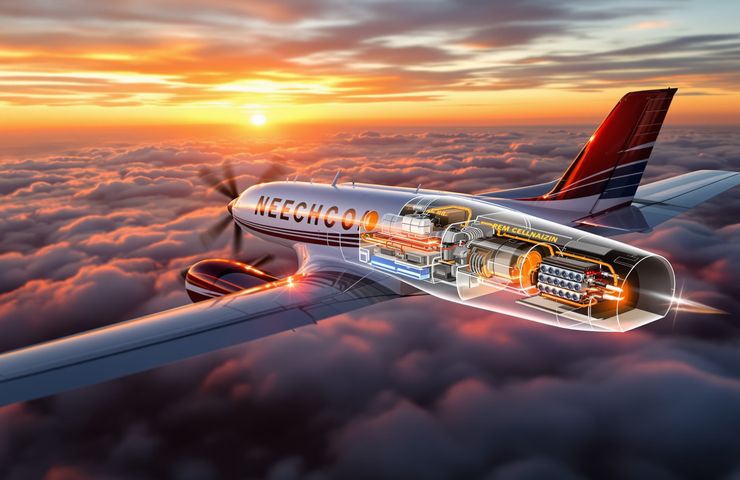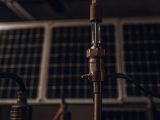
Advent and Stralis Equip Beechcraft Bonanza for Zero-Emission Aviation
August 19, 2025Advent Technologies (NASDAQ: ADN) teamed up with Australia’s Stralis Aircraft to outfit a Beechcraft Bonanza with Advent’s high-temperature proton exchange membrane (HT-PEM) fuel cell modules. The aim? To prove that a hydrogen-electric powertrain can fly farther than battery-only setups, shave operating costs, and help airlines hit their global decarbonization goals. Test flights are slated for later this year in Australia, drawing on Advent’s 150-plus patents and Stralis’s six-seat demonstrator platform, which should take to the skies by late 2025. This partnership not only underscores Australia’s ambition to be a green hydrogen export powerhouse, but also taps into Advent’s presence across the US, Europe and Asia to fast-track commercialization of zero-emission technology.
Key Insights
- Compact cooling architecture: By running between 120–200 °C, Advent’s HT-PEM cells let you shrink radiator size by up to 30%, trimming both weight and drag.
- Zero in-flight CO₂: The only “exhaust” is water vapor, perfectly aligning with ICAO’s CORSIA carbon reduction targets.
- Cost-cutting edge: Fewer moving parts and less thermal stress could slash maintenance bills by 40–60%, according to Advent and Stralis.
- IP boost: Exclusive licensing of Ion Pair technology from Los Alamos National Laboratory amps up membrane longevity and conductivity.
- Market buzz: Stralis already has letters of intent from several international carriers, signaling solid interest in hydrogen fuel cells.
- Ideal testbed: Australia’s sprawling regional network offers the perfect backdrop for long-range, low-emission hops.
Technical Dive
At the core of this hydrogen-electric powertrain lies the Membrane Electrode Assembly (MEA), which merges a polymer electrolyte membrane, catalyst-coated electrodes and gas diffusion layers into one sleek package. Here’s the scoop:
- Ion Pair technology: Bred at Los Alamos, it locks together anionic and cationic groups in the membrane, cutting down hydrogen crossover and boosting proton conductivity by around 20% at high temps.
- Catalyst finesse: Nanostructured electrodes let you minimize platinum-group metal loadings, striking a sweet spot between performance and weight.
- Thermal smarts: Running hot means you can tolerate minor hydrogen impurities (think CO), easing purification needs and simplifying ground fueling.
- Power density: The target is roughly 1 kW/kg for the HT-PEM stack—a competitive energy-to-weight ratio critical for aircraft.
Compared to sub-80 °C PEM cells, Advent’s high-temp modules keep their cool under varying loads, allow for smaller heat exchangers, and can instantly dial up power—just what you need during takeoff and climb cycles.
Historical Context
Aviation’s been running on kerosene-based turbines since the 1950s jet age, with most gains coming from aerodynamic tweaks and engine miniaturization. Over the past decade, battery-electric prototypes have popped up, but battery energy density still caps range at about 500 km for light aircraft. Hydrogen fuel cells, on the other hand, trace back to NASA’s 1960s programs and have recently rolled out in cars like Toyota’s Mirai. Early aviation trials stumbled over system weight, cooling headaches and storage challenges. Today, advances in fuel cell technology—think high-temperature membranes, nano-catalysts—and beefed-up hydrogen infrastructure, combined with tougher emission mandates, have reignited excitement. Meanwhile, global electrolyzer capacity is surging at about 30% annually, driven by demand for green hydrogen in hard-to-abate sectors.
Broader Impacts
- Lifecycle emission cuts: One regional aircraft could avoid over 1,000 tonnes of CO₂ each year, based on typical flight cycles.
- Operational savings: A 40–60% drop in maintenance costs can seriously shake up airline budgets—fuel and upkeep are huge line items.
- Hydrogen ecosystem boom: On-site electrolyzers, compression units and storage tanks will be needed at regional airports, turbocharging hydrogen infrastructure growth.
- Workforce growth: New roles in fuel cell assembly, certification, maintenance and hydrogen logistics will spring up, especially around Australia’s tech and resource hubs.
- Market shake-up: Legacy turbofan and turboprop suppliers might have to pivot or partner up to stay competitive as zero-emission technology takes off.
Business Angle
This partnership pairs Advent’s deep tech chops with Stralis’s aviation engineering and regulatory savvy. Advent Technologies, founded in 2012 with strong ties to US national labs, boasts over 150 patents and just regained NASDAQ compliance after settling a legal hiccup. Now, it’s laser-focused on commercializing its Ion Pair-enabled HT-PEM modules in aviation, marine and defense. Meanwhile, Stralis Aircraft—backed by Australian federal and state green aviation grants—is converting a Beechcraft Bonanza into a hydrogen-electric demonstrator and plans to certify a six-seat prototype by late 2025. Here’s how they’ve structured the deal:
- Exclusive MEA supply: Advent provides custom HT-PEM modules that bolt directly into Stralis’s propulsion pods.
- Cost-sharing R&D: Joint teams in California and Melbourne tackle integration, testing and certification together.
- Airline engagement: Letters of intent are already in hand from carriers across Australia, New Zealand, Asia, North America and Europe.
- Funding pathways: They’re tapping national sustainable energy and industrial decarbonization incentives to underwrite demo costs and smooth the certification path.
By pooling expertise and IP, both firms aim to accelerate time-to-market and lock in first-mover advantages in the nascent hydrogen aviation space.
Perspective
Hydrogen-electric propulsion is at a pivotal moment. Airlines love the idea of zero-emission technology for regional hops, but a few hurdles remain:
- Storage challenges: Hydrogen’s low volumetric density means you need cryogenic tanks or high-pressure vessels, adding complexity and weight.
- Refueling protocols: Ground crews will have to learn new safety checks and transfer procedures for hydrogen.
- Regulatory alignment: Joint certification standards between Australia’s CASA, the FAA and EASA will be crucial for cross-border ops.
- Cost competitiveness: Lower maintenance and operational spending look great, but upfront system costs and hydrogen pricing still matter big time.
Still, if those upcoming test flights prove the tech’s worth, hydrogen fuel cells could leapfrog battery-only designs and position regional aviation as a showcase for sustainable energy.
Closing Insight
As we gear up for the Advent-Stralis Beechcraft Bonanza’s first hydrogen-electric hops Down Under, one thing’s clear: this partnership could rewrite the playbook for short-haul aviation. If high-temperature proton exchange membranes deliver on their promise—compact cooling, tough-as-nails durability and lifecycle savings—regional airlines might finally have a genuine path to zero-emission travel. Stay tuned, because once hydrogen fuel cells take flight, a sustainable energy future in the skies might be closer than you think.
About Advent Technologies
Founded in 2012 and based in Livermore, California, Advent Technologies Holdings, Inc. specializes in high-temperature proton exchange membrane fuel cells and hydrogen technologies. With over 150 patents and exclusive licensing from Los Alamos National Laboratory, Advent is targeting aviation, marine, defense and portable power markets with its cutting-edge fuel cell technology.
About Stralis Aircraft
Stralis Aircraft is an Australian clean aviation company developing hydrogen-electric propulsion solutions. Its current project retrofits a Beechcraft Bonanza for zero-emission test flights, with a six-seat demonstrator on track for certification and commercial rollout by 2025.



 With over 15 years of reporting hydrogen news, we are your premier source for the latest updates and insights in hydrogen and renewable energy.
With over 15 years of reporting hydrogen news, we are your premier source for the latest updates and insights in hydrogen and renewable energy.